Knowing what foods can be eaten in the wild isn’t just about survival. It is about self-sufficiency and having a connection with nature. Nothing is tastier than eating a meal you found and prepared on your own!
Getting started with wilderness survival food can be a bit tricky. Sure, there are plenty of articles about wild edible plants, and we’ve even got an article about eating insects for survival and the right way to eat grasshoppers.
However,
I do NOT recommend that you start memorizing massive lists of edible plants and ways to make animal snares.
Instead, a much better approach to getting started with wilderness survival food is to learn the “wilderness food pyramid.”
What is the Wilderness Survival Food Pyramid
The Wilderness Food Pyramid isn’t about what you should eat. Rather, it shows you what foods you should learn to eat available based on your skill level.
When starting out with wilderness survival, you will be eating foods that don’t move fast or at all. Examples of these are wild edible plants and insects as survival food.
As you get more comfortable in the wild, you can work up to small game and fish. With the right knowledge, these can be caught with traps and snares or a hunting slingshot.
You’ll note that wild mushrooms are higher up in the pyramid. This is because, even though mushrooms won’t run away from you so are easy to forage, it requires a lot of knowledge to properly identify mushrooms. A lot of edible varieties resemble poisonous ones!
As you reach a more expert level, you will start eating larger game like deer and elk. These require skill to kill (particularly patience!) and skills in preparing and preserving the meat.
Here is what the Wilderness Survival Food Pyramid looks like:
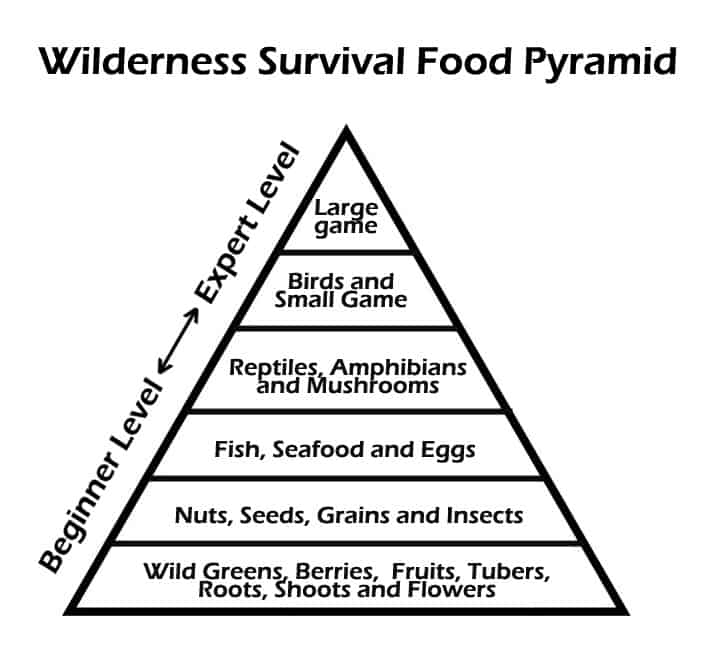
Wild Greens, Berries, Fruits, Tubers, Roots, Shoots and Flowers
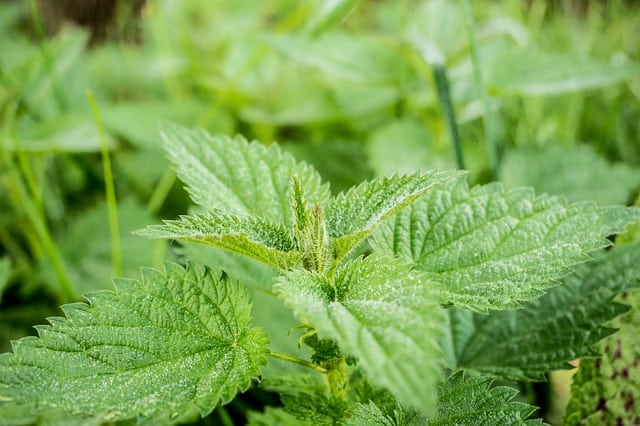
These are some of the easiest wilderness survival foods to find. I suggest you get a good field guide for your area and start hiking to forage for food. It is fun, and you’ll get some practice in identifying wild edible plants.
Examples:
- Cactus
- Blueberries
- Wild strawberries
- Stinging nettles
- Chicory
- Cattails
- Day lily
- Wild asparagus
- Lambs quarters
- Fiddlehead ferns
- Mint
- Watercress shoots
- Bamboo shoots
- Water lily roots
- Burdock
- Thistle root
- Wild carrot
- Wild onion
Nuts, Seeds, and Grains
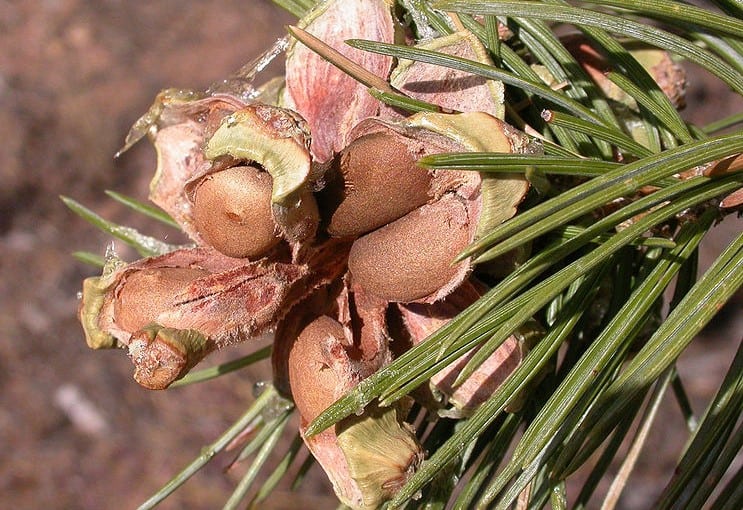
These fall slightly higher on the wilderness survival foods pyramid because they aren’t always easy to access. For example, you may need to climb trees to get some nuts before critters like squirrels do.
Some nuts, such as acorns, must be soaked in water before being consumed to get rid of the tannins.
Recommended Reading: How to Harvest, Prepare and Eat Acorns
Eating wild grains takes a bit more knowledge. In many cases, you can just chew on wild grasses to get their nutritious juices and then spit out the indigestible fiber.
To use the seeds to make grains, you’ll have to harvest them and grind them up.
Examples:
- Wild rice
- Amaranth
- Indian rice grass
- Wild rye
- Mesquite pods
- Acacia
- Walnuts
- Hickory nuts
- Acorns (*note you have to soak them first to remove the tannins)
- Pine nuts (read how to harvest pine nuts)
Insects
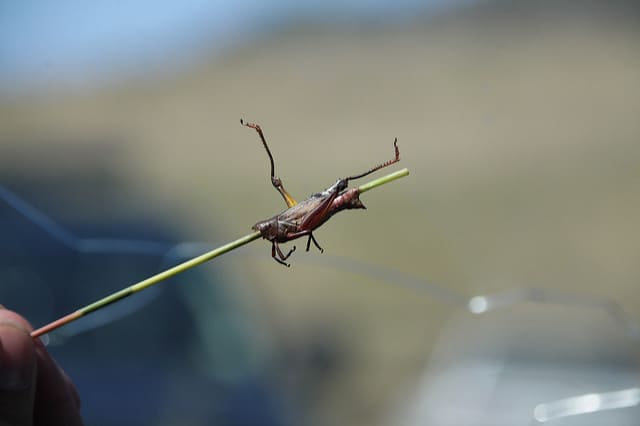
It is annoying how eating insects has been stigmatized as gross. In many countries, eating insects is considered completely normal — as it should be considered since insects are so nutritious!
Unfortunately, when we see people eating insects most of the time, it is on some hyped-up reality TV show like Bear Grylls or Survivor.
You should NEVER just chomp the head off of a live insect!!!
Just like with meat, insects should always be cooked to kill any parasites that may be in them before eating. There are a lot of edible insects. Crickets and grasshoppers are my favorite (though ants are also pretty tasty).
Examples:
- Ants
- Grasshoppers
- Ants and their larvae
- Maggots
- Termites
- Earwigs
- Beetles
Fish, Seafood, and Eggs
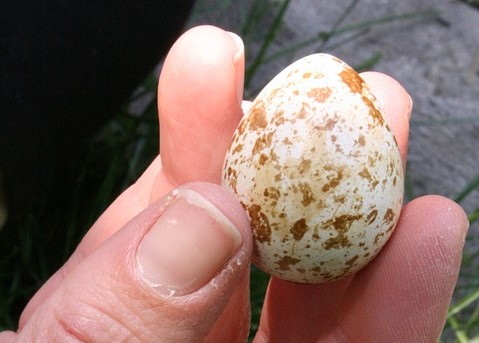
Forget what you’ve seen in the movies! Catching a fish with your bare hands or even a spear requires much skill. However, it is fairly easy to make a fish trap. See these examples of how to make a survival fish trap.
You can even set the trap and forget it until the next day. How easy is that!
Near the ocean, you can trap other types of animals. As for eating eggs, this is fairly easy in the right season – assuming that you can climb a tree!
Examples:
- Bird eggs
- Fish
- Clams
- Shrimp
- Oysters
- Squid
- Crabs
- Kelp
- Nori
Reptiles and Amphibians
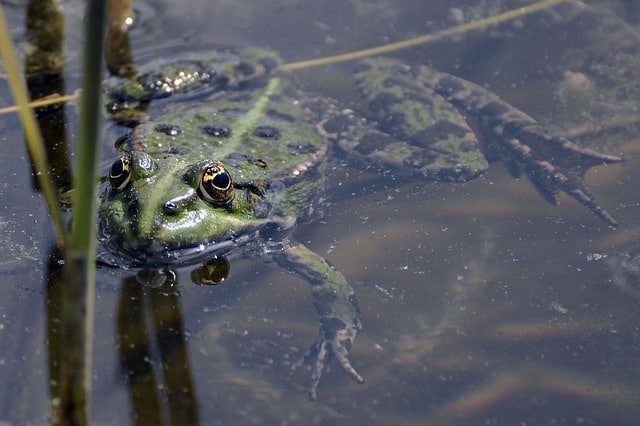
Amphibians can often be caught with your bare hands in lakes, streams, or other smaller bodies of water. You can also make traps to catch them.
Lizards are harder to catch because they move quickly and can hide in small crevices. However, lizards are all over the place, so you’ve got a good chance of getting one if you set a trap.
You can watch how to make a lizard bottle trap here:
Examples:
- Frogs
- Turtles
- Lizards
- Salamanders
- Snakes
Mushrooms
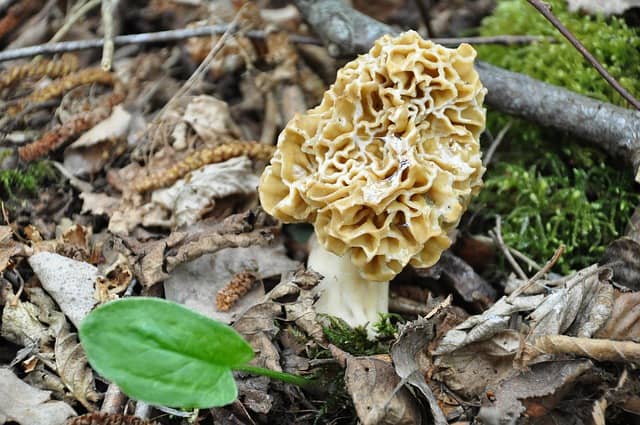
Mushrooms are a great survival food, but you’ve got to be cautious about eating them. Many edible mushrooms resemble poisonous ones.
Even if you don’t get killed by eating the wrong type of mushroom, you could end up with diarrhea – and that might kill you out of dehydration! In other words, don’t take any chances.
Eat foods lower on the survival pyramid and move to mushrooms. Preferably, you start foraging wild mushrooms with an experienced guide. NEVER use social media or online sites (except very reputable ones) to identify mushrooms.
Examples:
- Morels
- Chanterelles
- Puffballs
- Chicken of the Woods (Laetiporus sulphureus)
- Oyster mushrooms
Birds and Small Game
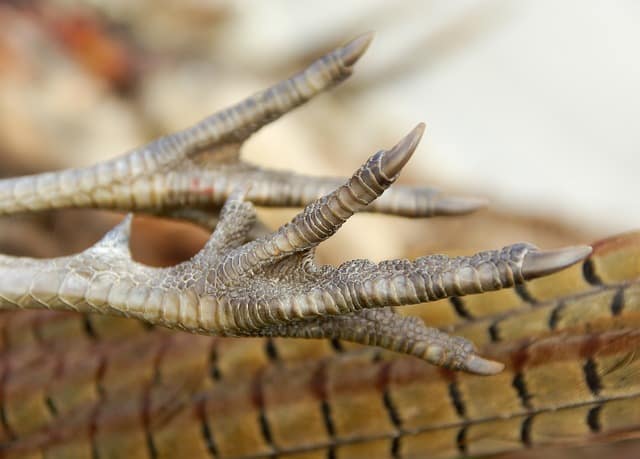
If you want a good guide to snares and traps, I recommend checking out this page. We go over some basic traps for catching birds and other small game.
Examples:
- Geese
- Ducks
- Quail
- Pigeons – can you eat pigeon?
- Rabbits and hares
- Mice
- Chipmunks and squirrels
Large Game
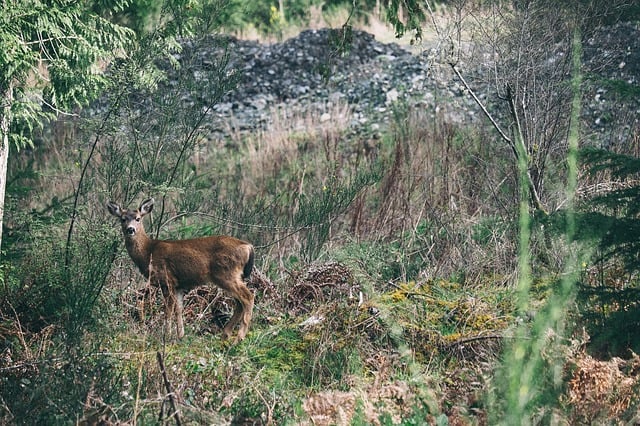
If you are patient enough and have a rifle, and are a decent shot, hunting large game doesn’t require that much skill.
But, since we are talking about a SHTF survival situation here, you might not be able to hunt with a rifle. The sound could draw attention to your location. Hunting with silent weapons like spears, bows, and arrows is not so easy! You will need a much higher level of skills for this wilderness survival food.
There is much more to hunting large game for survival than just killing it! Unless you want all your meat to go to waste, you better know how to preserve it. Again, this takes skill, knowledge, and practice.
Read more about how to preserve meat in the wild.
Examples:
- Deer
- Elk
- Caribou
- Wild boar
- Moose
What foods have you eaten in the wild? Do you agree with the skill level required for each type of survival food? Let us know in the comments.
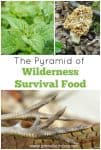


Wow,
That is a lot of food for thought even if you get lost in the woods for a few nights which I read about that happening to people.
I had better start reading!